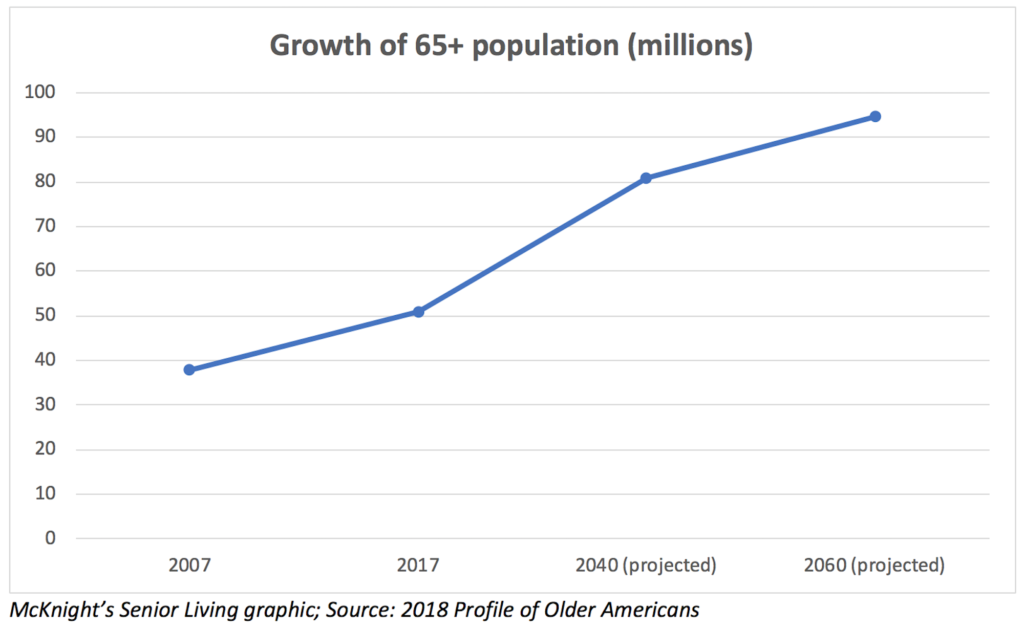The U.S. population aged 85 or more years is projected to more than double by 2040, increasing from 6.5 million in 2017 to 14.4 million in 2040, notes a report released Friday by the federal Administration for Community Living, which includes the Administration on Aging.
That’s a 123% increase, according to the authors of the 18-page “2018 Profile of Older Americans,” which includes statistics from several sources. The report puts numbers to the recent and projected growth as well as other characteristics of the U.S. 65+ population.

The population aged 65 or more years has increased 34% over the past 10 years, going from 37.8 million in 2007 to 50.9 million in 2017, or to 15.6% of the overall population, the report notes. The 65+ population is projected to reach 80.8 million by 2040 — doubling from 2000 and representing 21.6% of the overall population — and 94.7 million in 2060, according to the authors.
Other highlights of the report:
- States with the highest current number of residents who are over 65 include California (5.5 million), Florida (4.2 million), Texas (3.5 million), New York (3.2 million) and Pennsylvania (2.3 million).
- States with the highest current percentages of their population being aged 65 or more years include Florida (20.1%), Maine (19.9%), West Virginia (19.4%), Vermont (18.7%), and Delaware and Montana (18.1% each).
- States with the largest increases in growth of their 65+ populations from 2007 to 2017 include Alaska (71%), Nevada (57.8%), Colorado (55.7%), South Carolina (50.7%) and Georgia (50.3%).
- From 2017 to 2018, 4% of those aged 65 or more years moved, compared with 11% of the population aged fewer than 65 years. Fifty-eight percent of the older movers stayed in the same county, 21% stayed in the same state, and 21% moved out of state or abroad.



